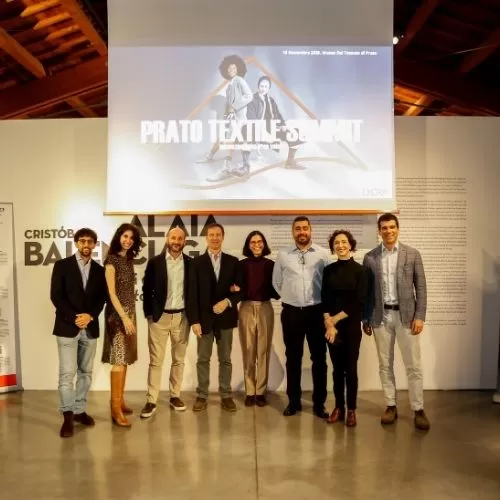03 Jun 2024
Futuristic trends in the textile industry
The future of clothing: what lies ahead?
When people think about the clothing of the future, they imagine that clothes will be advanced tools designed to improve our daily lives in ways that seemed like science fiction just a few years ago. Our clothes could be connected, smart, increasingly comfortable and completely eco-friendly. While we cannot predict with certainty how fashion will evolve, it is clear that the textile industry is moving in three main directions: technology, sustainability and innovative materials.

Intelligent clothing and adaptive and technological textiles
It is now well known how new technologies have influenced and will continue to influence the textile and clothing industry. Adaptive fabrics, garments that can adapt to environmental conditions and perfectly insulate the human body, already exist and are mainly used in sportswear. Another innovation is smart clothing, which includes garments equipped with advanced technologies such as sensors and IoT connectivity that offer innovative features such as health and sports performance monitoring. Some major brands have already succeeded in developing heatable jackets and T-shirts that can monitor heart rate and breathing during physical activity and transmit the data to mobile devices. One day, these garments could become an integral part of your everyday wardrobe.
Advanced Sustainability
The future direction and need of the textile industry is to create sustainable and environmentally friendly garments. Some emerging brands have begun to use yarns and fabrics made from organic waste materials, from plant sources such as algae, fungi and grains, or by reusing end-of-life items. One example is Q-Cycle by Fulgar® yarn, a recycled polyamide made from discarded tires and produced from 100 percent non-fossil raw materials in a mass-balanced approach.
Manufacturing processes will become more sustainable. Techniques such as waterless dyeing and the use of renewable energy will become standard, contributing to a greener product lifecycle. A circular economy will be promoted, where garments can be easily recycled or biodegraded much faster. One example already in use is Amni Soul Eco® yarn, a polyamide designed to facilitate degradation under anaerobic landfill conditions. This yarn allows bacteria to access and digest waste material more quickly, speeding up the degradation process and reducing environmental impact.
Advanced textile functionalities
Scientific innovations are revolutionizing the textile industry by introducing new yarns with special properties and spinning techniques that give fabrics advanced properties such as stain resistance, antibacterial and waterproofing. Not only do they improve the functionality and durability of fabrics, but they also keep garments comfortable and stretchy. One example is Fulgar®'s Q-Skin odor control fiber, a polyamide 6.6 yarn with silver ions that can regulate bacterial growth. Or the Emana by Fulgar® yarn, a smart fiber that uses minerals to absorb and release body heat in the form of infrared rays, increasing well-being during physical activity.
The future of textiles is already underway, with innovations that are transforming our clothes into smart, sustainable and highly functional garments. Advanced materials and innovative technologies promise to improve our daily lives by making clothing more comfortable, practical and environmentally friendly.
Explore our advanced polyamide yarns and learn how they can make a difference in your garment production!
Contact Fulgar for more information!




